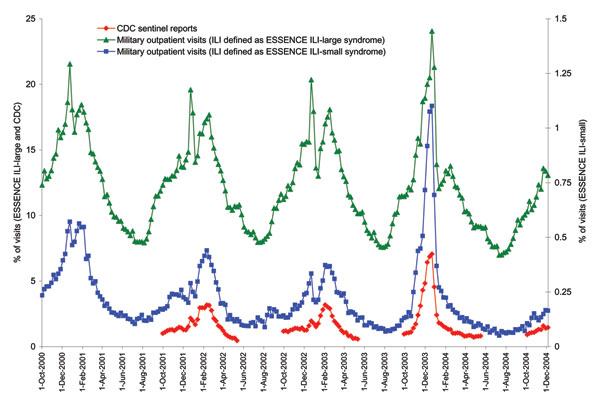Volume 13, Number 2—February 2007
Research
Code-based Syndromic Surveillance for Influenzalike Illness by International Classification of Diseases, Ninth Revision
Figure 4

Figure 4. Percentage of visits for influenza-like illness (ILI) using both the large and small syndrome groups among military outpatient visits nationwide compared with Centers for Disease Control and Prevention (CDC) sentinel clinician reports from October 2001 through December 2004. Data are grouped weekly from Sunday through Saturday. CDC data are only obtained during the influenza season. ESSENCE, Electronic Surveillance System for the Early Notification of Community-based Epidemics.
1Current affiliation: Tacoma–Pierce County Health Department, Tacoma, Washington, USA
2Current affiliation: US Census Bureau, Suitland, Maryland, USA
3Current affiliation: Uniformed Services University of the Health Sciences, Bethesda, Maryland, USA
Page created: June 29, 2010
Page updated: June 29, 2010
Page reviewed: June 29, 2010
The conclusions, findings, and opinions expressed by authors contributing to this journal do not necessarily reflect the official position of the U.S. Department of Health and Human Services, the Public Health Service, the Centers for Disease Control and Prevention, or the authors' affiliated institutions. Use of trade names is for identification only and does not imply endorsement by any of the groups named above.